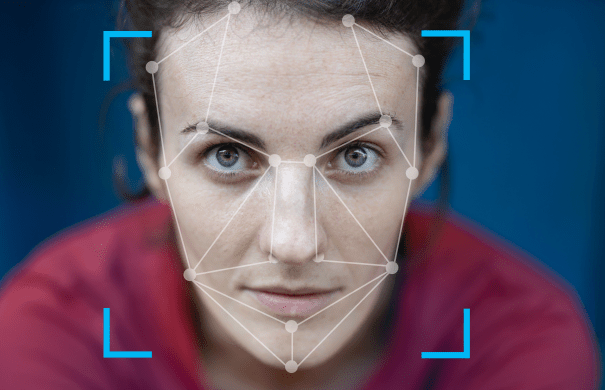Modern business operations involve huge amounts of data that are characterized by different degrees of complexity and processing, which encourages heavy use of machine learning (ML). Not surprisingly, ML systems and platforms are the most heavily funded in AI for 2020–2021, amounting to $42 billion according to FinancesOnline. What is so special about machine learning that it’s been gaining ever-increasing popularity in powering innovations, improvements and success? Read on to find out.
The Basics of Machine Learning
First named by artificial intelligence pioneer Arthur Samuel in 1959, machine learning was brought into active use in the 1990s, as it became a stand-alone field.
Machine learning is a technology that extracts valuable knowledge from raw data and learns from it to address information-intensive tasks.
The function of ML includes two major stages:
- Exploring data, identifying patterns and creating a model based on these
- Making decisions and predictions based on the models
It doesn’t imply explicit programming; instead, ML algorithms train software so that it becomes able to learn and improve itself. These algorithms need huge amounts of information, and their thorough study, parsing and analysis allow them to identify patterns and develop instructions for decision-making and predictions.
Quite frequently, ML is considered to be part of artificial intelligence; others say that only its ‘intelligent’ part is a subfield of AI. In The Book of Why, Judea Pearl explains the difference between machine learning and artificial intelligence: ML relies on passive observation, while AI actively interacts with the environment. Either way, ML shares many approaches and working principles with AI.
Machine Learning: How It Works
The development of ML-based software depends heavily on the preparation of a model. Let’s get to know the key steps included in this process.

1. Choosing and Preparing a Training Dataset
Training data is a dataset that represents other data that an ML model will process and digest when tackling its task.
Depending on the case, training data can be labeled, which means flagged to possess a specific feature or belong to a specific class, which a model needs to identify. If data is unlabeled, a model flags features or assigns classes on its own.
The mandatory requirement for training data is that it must be prepared in a way that makes it easy to process by an ML model. So, it should be parsed, normalized and split into several subsets, which will be used for training, testing and evaluation.
Data preparation is very important. It’s said that a data scientist’s job is 90% preparing data and only 10% training the model on the prepared data.
2. Choosing a Machine Learning Method
The specifics of ML-based software development projects depend on the machine learning method that a team chooses: supervised, unsupervised, reinforcement and semi-supervised learning. The method is determined according to the way that algorithms learn.

Supervised Learning
As the name suggests, this type of learning is performed under the control of a data scientist. The data scientist labels input data, sets required variables, specifies desired outputs and determines the correctness of the assessment. This type of learning works well in the following cases:
- Regression modeling
- Ensembling
- Binary classification
- Multi-class classification
- Object detection and segmentation
Unsupervised Learning
Also evident from the name, this type of ML-based software development doesn’t require a specialist to monitor how algorithms learn. Unsupervised learning relies on predetermined data sets and predictions.
In this case, algorithms learn using unlabeled training data and inspect datasets for patterns that can help pick out meaningful connections and data subsets. This type of learning is used for:
- anomaly detection
- data clustering
- down-weighting
- association mining.
Unsupervised learning is the foundation of deep learning and neural networks.
Semi-Supervised Learning
This is a combination of supervised and unsupervised learning, which means that data scientists provide labeled data to algorithms, but the algorithms can explore data and develop their own understanding of it without human intervention. Based on labeled data provided by humans, algorithms identify data specifics and apply them to unlabeled data.
Why choose this approach? It’s more manageable than the unsupervised method but is more cost-efficient and less time-consuming than supervised learning. The most vivid examples of its application in software development projects are fraud detection and machine language translation systems.
Reinforcement Learning
This type of ML is used when a process that a machine needs to learn to perform consists of many steps and each of them has clearly defined rules. In the process of learning, data scientists provide the algorithm with feedback and cues on the quality of its work. This will encourage the ML algorithm to seek positive rewards (reinforcement).
Good examples of the use of reinforcement learning are video games, robotics-based automation and resource management software.
3. Selecting an Algorithm to Run on the Training Data
A machine learning algorithm is a combination of data processing procedures that are embedded in software code.
Factors that determine the type of ML algorithms to be used are the business problem that needs to be addressed, the available resources and the data specifics (whether it’s labeled or unlabeled, and its amount).
Generally, algorithms fall into the following categories depending on the problem they’re used to solve:
- Classification: they choose between several classes and provide probabilities for them: Logistic Regression, Naive Bayes, Support Vector Machine, K-Nearest Neighbors, etc.
- Regression: they enable a model to predict the number of a variable: Naive Bayes, LARS Lasso, AdaBoost, XGBoost, Elastic Net, Random Forest, etc.
- Clustering: they enable grouping of similar data and label these according to the group they belong to: K-Means, Kohonen, TwoStep, etc.
- Dimensionality reduction: they enable the combination or dropping of insignificant data: Principal Component Analysis (PCA), Linear discriminant analysis (LDA), Forward Feature Selection, Factor Analysis, etc.
There are two groups of ML algorithms depending on data type: ML algorithms used with labeled data (regression, instance-based algorithms and decision trees) and those used with unlabeled data (clustering and association algorithms).
4.Training the Algorithm to Get the Desired Results
Algorithm training is iterative, and each cycle involves:
- forward propagation
- comparing the deliverables with the desired result
- adjusting the algorithm to gain the best results and repeating these steps until it produces the outcome needed for the specified probability rate.
The resulting solution is a machine learning model. After an ML model is prepared, it can be used with new data to solve new business problems, and is gradually improved in terms of efficiency and accuracy.
Real-Life Use Cases
“Machine learning is frequently referred to as the technology of the future. The reality is that we already use ML-based solutions and use them heavily,” says Andrei Andreyanau, ML engineer at SaM Solutions.
Let’s have a look at the most striking examples of machine learning application in real life and in projects.

Intelligent Automation
Intelligent automation combines artificial intelligence and robotics process automation (RPA), which streamlines operations and improves business efficiency.
Using machine learning, companies automate data entry, risk assessment and other routine cases, including those that involve decision-making. ML also imposes certain patterns and boundaries. It helps machines enhance and refine conventional rule-based automation so that they can better adjust to changes.
Benefits: cost-effectiveness, optimized use of resources, quick time to market, high product quality and better thought-out decisions
User-Specific Recommendations and Ads
Personalized recommendations are at the heart of modern customer service, and ML plays an important role in it.
Content that users will almost certainly like can be generated by recommendation engines that are widely used by services such as Netflix, Facebook, Amazon, Spotify and many retail, news service, entertainment and other companies. Under the hood, these engines rely on user behavior patterns. ML algorithms also evaluate the content of a specific web page to provide users with the most relevant ads.
Benefits: relevant, engaging content that helps retain customers and increase their loyalty
Virtual Assistants and Chatbots
Today, chatbots and virtual assistants (the most famous examples being Amazon’s Alexa and Apple’s Siri) have become a widespread customer service tool for many businesses and an integral part of projects on customer experience improvement.
This software is based on supervised and unsupervised learning methods and relies on the ability to learn from huge amounts of user interaction data. It combines NLP, pattern recognition and neural networks to process and ‘understand’ audio and text exactly as humans do.
Benefits: customer service and support personnel handle more important tasks; enhanced comfort for users
Predictive Analytics
The capability of ML to process data and extract valuable insights from them is widely used for projects that require high-quality predictions. ML-based predictions work equally efficiently for systems used in manufacturing and logistics (predictive maintenance), sales (predictive lead scoring, advertising, demand forecasting, sentiment analysis) and other industries.
Benefits: high-quality predictions and planning
Image Analysis
Applied in many domains and business verticals, ML-enabled image analysis frees humans from processing massive amounts of visual information and minimizes the error rate. Recurrent neural networks (RNNs) and convolutional neural networks (CNNs) are at the heart of extracting efficient insights from visuals.
“Convolutional neural networks have gained a lot of popularity. They are usually used in such cases as image classification and object detection. The main idea is that CNN models can extract the most valuable features from images,” says Java software engineer and ML enthusiast Volha Shyrayeva.
Benefits: quick and high-quality analysis
Fraud Detection
ML classification and regression algorithms can detect malicious cybercriminal behavior and do so with much higher probability than traditional rules-based systems. They use behavioral analytics to explore data logs from any device type and identify potential threats.
Benefits: high-quality cybercrime detection
Self-Driving Cars
Autonomous cars are impossible without the capability of ML to identify objects and classify them in terms of safety and other characteristics, as well as predict their behavior and motion trajectory.
“However, neural network model predictions almost never reach 100% accuracy. In real life, 99% accuracy could be disastrous in autonomous cars. I think AI assistants might be a better option for drivers than self-driving cars,” says Java software engineer and ML enthusiast Volha Shyrayeva.
How Machine Learning Transforms Software Development
Machine learning not only influences the way humans live and businesses work, but it has also caused huge changes to software development itself. Let’s find out how ML affects project development procedures and processes.
Back in 2017, it was reported that TensorFlow could fit 500,000 lines of Google Translate code in its 500 lines. Used only to show how ML can be used in software development projects, this case is testimony to its efficiency in programming effort and code size. Beyond that, a neural network may need retraining, but not coding anew, and it can combine existing modules in the development of new programs.
It’s been said that in the near future, programmers will teach, train and analyze, but not code. In other words, for projects, software developers will train systems and evaluate outcomes rather than develop programs.
Others think that ML will only be useful in programming small software and the optimization of code parts rather than in the development of high-volume systems from scratch.

While the future of machine learning in software development projects remains to be seen, let’s have a look at its current use cases. They are the following:
- Performance monitoring of other software. There are monitoring and tuning models that control the work of other systems.
- Testing. While not necessarily fixing the code, an ML system checks software for bugs and other known potential vulnerabilities.
- Code review. ML can find code deviations from specified requirements, coding standards and coding guidelines.
- Extracting insights from the code. ML-based tools provide insights on a variety of issues, such as the extent of legacy and unmaintained code, software that is still not cloud-enabled, best-performing development specialists, lack of skills in the team, etc.
- Project management streamlining. ML helps with project forecasting, team composition, work breakdown, project documentation review, etc.
Make the Most of Machine Learning for Your Processes and Your Clients
Although it’s still considered a technology field of the future, machine learning has already been successfully adapted in many solutions that people and businesses use on a daily basis. And it’s no wonder, as ML provides incredible benefits to end users: it enhances operations and processes, reduces costs and saves time.
To find out how the development of machine-learning software can improve your business processes and create an efficient solution that will fit your corporate environment and needs, contact our specialists.



















 The Latest 15 Information Technology Trends in 2024
The Latest 15 Information Technology Trends in 2024 Top 10 Embedded Software Development Tools
Top 10 Embedded Software Development Tools IaaS vs. PaaS vs. SaaS: What’s the Difference?
IaaS vs. PaaS vs. SaaS: What’s the Difference? 10 Examples of Predictive Analytics
10 Examples of Predictive Analytics











